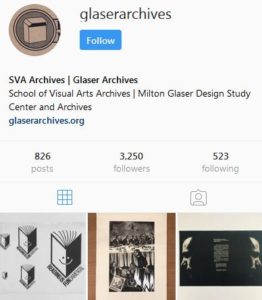The Association for Library Service to Children hosted a webinar, “Advocacy for Everyone,” on Wednesday, October 3, 2018. Four panelists, moderated by librarian Africa Hands, discussed Advocacy in relation to children and youth librarianship.
The first question Hands asked was about how advocacy related to children and youth librarianship. The first speaker was Brian Hart, board member of Greensboro Public Library in North Carolina. He believed in the importance of intentionality in interacting with the public. When a librarian is deliberate in telling parents the value of bringing their children to libraries, it that e and child to be advocates for the library. He emphasized that libraries help create a civil, confident, educated society through providing to children. By giving this perspective and language to parents, parents can then go out into their own network and spread the message about the positive effects of utilizing the library. This brings in the community and provides unity, which fosters advocacy. Confidence is a large part of the work.
John Gehner’s article, “Libraries, Low-Income People, and Social Exclusion,” discussed how social exclusion can minimized by the efforts of libraries. Hart’s point about deliberate action to speaking with patrons, therefore empowering them utilize the library and be advocates, is aligned with Gehner’s idea that librarians can remove barriers that cause exclusion by doing one-on-one interactions, offering welcoming orientations, and accommodating visitors. Once libraries welcome patrons, and will patrons demonstrate the value of libraries, which then allows libraries to advocate for resources to provide even more service to the community.
A second answer for the question about advocacy was answered by Gretchen Caserotti, Library Director of Meridian Library District in Idaho. She emphasized that the work of advocacy is not insular. She pointed out the potentially strong relationship betweens libraries, schools, and other youth-related programs. With this, public speaking becomes a valuable skill for libraries because advocacy requires communication. She described it as an asset in advocacy.
Gehner’s fourth action, “Get out of the library and get to know people,” discussed this point. The article listed three points that library staff must do, the third one being “build and rebuild relationships between and among local residents, local associations, and local institutions.” As Caserotti explained in the webinar, physically going out to meet people is essential to connecting and advocating.
The next question Hands asked was about whose role it was to lobby for advocacy. Constance Moore, Vice President of Bucks County Free Library in Pennsylvania, believed it was broadly everyone’s job. Hart and Caserotti specified that different levels of government, and different groups in general, have varying roles. Hart, being a board member himself, believed that smaller organizations have more information about a local landscape, and therefore are equipped to position the library for advocacy success. Caserotti emphasized that each level of the government affects libraries, and the communities libraries serve, in multiple ways. She wanted to note the importance of considering each level, and having the “right” people for each issue. For example, a library board makes sense on a state level, where as a city council make sense on a city level.
The job of advocating by the general public is also easier with the internet. In Pew Research Center’s article, “Digital Life in 2025”, Janna Anderson noted, “political awareness and action will be facilitated and more peaceful change and public uprisings like the Arab Spring will emerge.“ Because social media allows for the general public to advocate for a mission, Moore’s push to having everyone lobby is much easier. It also allows different levels of authority to advocate simultaneously and tackle the same issue from different angles.
At the same time, there are dangers to using the internet for advocacy. There may be mixed messages or over-saturation of information. While a violent uprising is unlikely in an American library in 2018, it is possible that miscommunication can hinder advocacy rather than promoting it.
Hands’ next question asked about the process of lobbying and advocacy. Kristen Figliulo, Program Officer for Continuing Education at ALSC, believed that everything from phone calls to physically being in a room and testifying, is valuable, since legislation is a long process. She also believed in the value of building relationships before issues appear, so by the time they do, libraries feel comfortable reaching out. A way to develop a relationship includes inviting legislators for tours, sending them information about events, and overall keeping them up to date about events happening or involving the library. Figliulo also emphasized the value of building a relationship with the media. As mentioned earlier in the Pew Research article, the internet, where most of the media lives, allows for facilitation of change.
One issue Hands brought up was the issue of the boundaries of advocacy. Caserotti believed that context is important. For example, public agencies may not always allow public funds to be used for advocacy. Therefore, advocacy may have to come from different positions. Being “on the clock” versus “off the clock” affects how a message may be interpreted. Returning to Gehner’s article, the fifth action was, “understand that charity is not dignity; dignity is inclusion.” Advocacy allows for inclusion, but aggressive, blind, thoughtless advocacy may create what Gehner described as a “disconnect between saying we serve everyone and actually doing so.” In advocacy, the position of not only the community, but the librarians, must also be considered.
The final question asked the panelists, what is one small act of advocacy that you can do every day as a library employee? Hart, coming full circle, believed that confidence and openness to speaking about the positive effects of the library on the community. Caserotti emphasized the value of statistics. Reference clicking and program attendance are few of the ways to quantify the value of a library. She also described the “share up” idea. Librarians may hear about stories every day in the stacks, but directors such as herself don’t hear the stories. She believed that if librarians trained themselves to share the stories of the library doing good for the community, it empowers her, as a leader, to do more.
The webinar addressed many issues in the context of children and youth librarianship. However, many points about advocacy are applicable to the wider reach of librarianship, and information science as a whole. From finding the “right person” for the right level of government, to the data tracking and face-to-face communication of a larger public, actions for advocacy can be applied across a range of institutions, organizations, and missions.
Alvina Lai
Fall 2018


